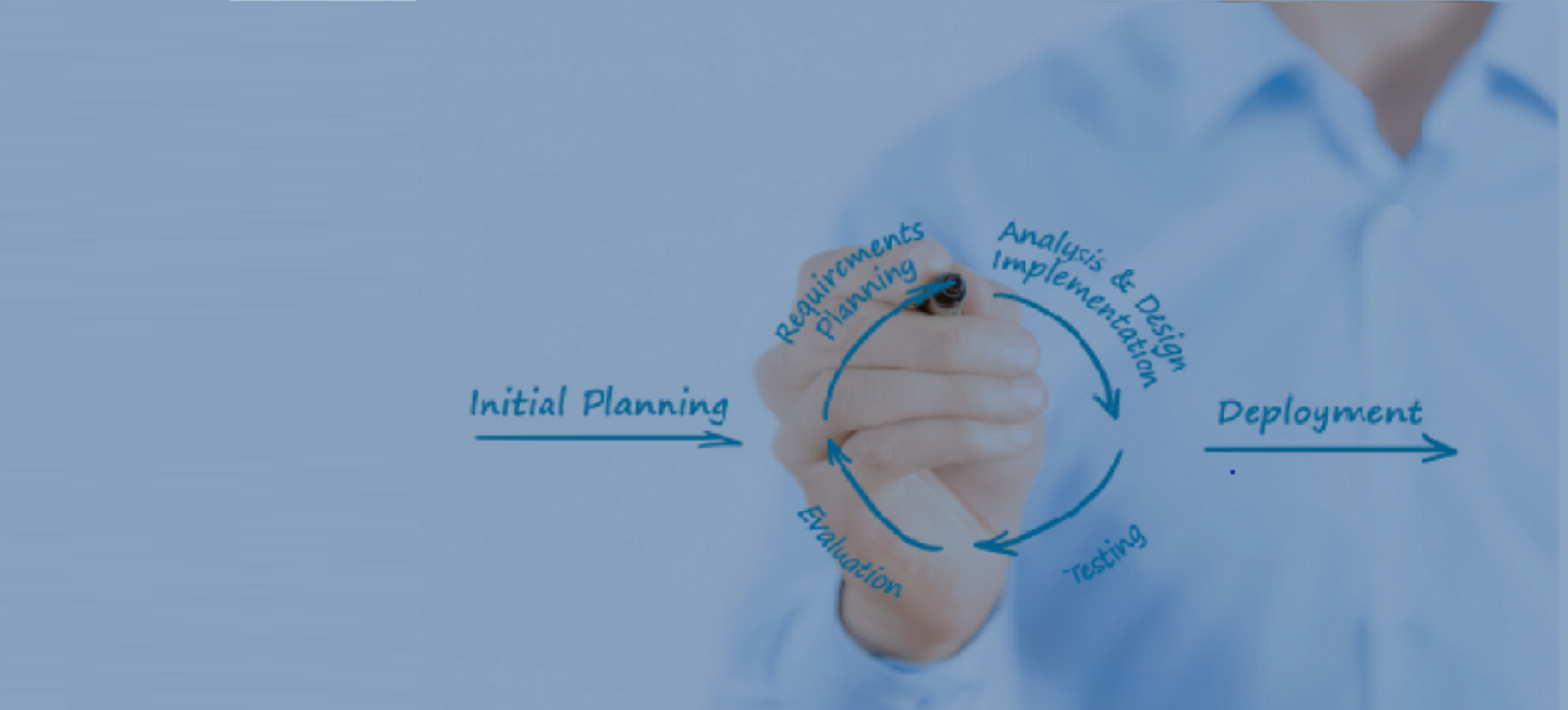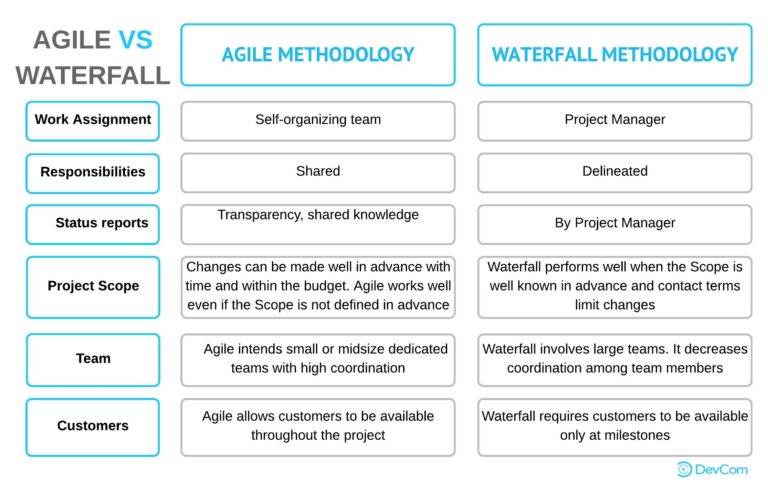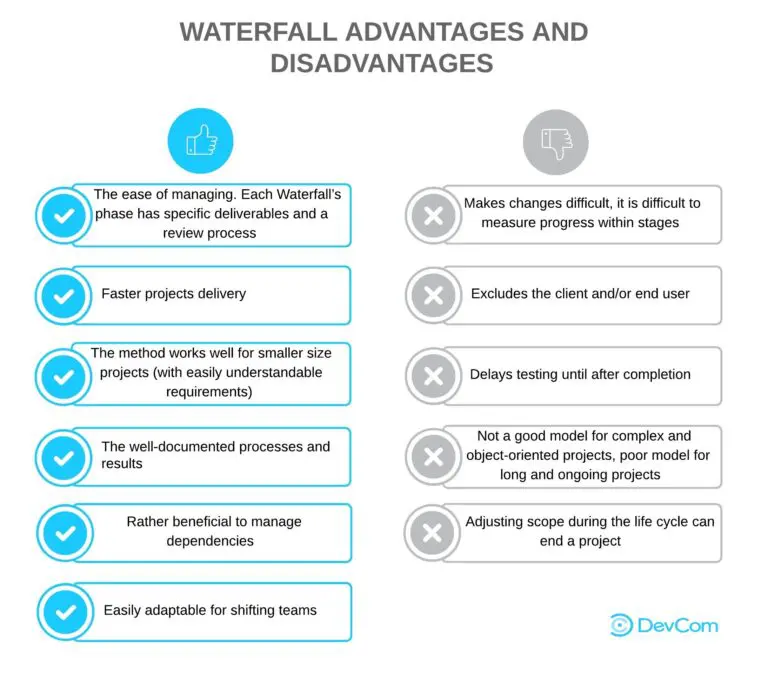Contents
- 1 What Is Agile Methodology?
- 2 Why Is Agile Software Development So Popular?
- 3 8 Benefits Of Agile Software Development
- 4 Agile Advantages in Software Development
- 5 Disadvantages of Agile Methodology
- 6 Comparing Agile to Traditional Development Approaches
- 7 When to Use Agile Software Development
- 8 Conclusion
- 9 FAQ
In an era where technology is advancing at an unprecedented pace, businesses need software development methodologies that can keep up with the demands of a dynamic market. Agile software development offers a clear advantage, providing organizations with powerful tools to adapt quickly, innovate effectively and compete successfully. By understanding the core benefits of Agile development, companies can unlock new opportunities and thrive in the fast-paced digital landscape. This article dives into the top eight benefits of Agile software development, highlighting its critical role in driving business success in 2026.
What Is Agile Methodology?
Agile methodology is an iterative, time-boxed, people-oriented and result-focused approach to software delivery. It builds software incrementally from the start of the project instead of delivering it all at once near the end. This iterative nature underpins the agile process in software engineering, fostering flexibility and adaptability throughout the development cycle. So, what is Agile methodology in software development?
Agile methodology is aligned with the values and core principles described in the Agile Manifesto for Software Development. According to this primary principle, requirements, plans and results are evaluated continuously. When this methodology is used, teams have a natural mechanism to quickly respond to change.
Why Is Agile Software Development So Popular?
Agile methodologies began emerging in the early 1990s as the software industry experienced rapid growth. Traditional software development approaches were increasingly seen as too rigid, often leading to budget overruns and project delays. In February 2001, 17 leading software engineers and independent practitioners gathered in Snowbird, Utah, to discuss an alternative, more flexible approach to software development. This meeting led to the creation of the Agile Manifesto, outlining the core principles of Agile philosophy.
The leading developers issued a symbolic manifesto for Agile software development that consisted of four main Agile development principles:
⇒ Individual and team interactions over processes and tools
Software development is inherently a human activity. Tools are essential, but the quality of interactions within the team plays a far more critical role in delivering successful software.
⇒ Working software over comprehensive documentation
While documentation is useful for users and stakeholders, the primary goal of software development is to create software that delivers tangible business value rather than focusing on extensive documentation.
⇒ Customer collaboration over contract negotiation
Agile encourages continuous communication with customers to ensure that software development teams understand their needs and priorities. Customer feedback is crucial to delivering a product that meets their expectations.
⇒ Responding to change over following a plan
Change is inevitable in software development, and Agile methodologies embrace flexibility. Project plans should be adaptable to accommodate changes to ensure the team can respond to evolving requirements.
Following these principles, Agile developers work in short, regular iterations known as Sprints (typically lasting 2-4 weeks). Each Sprint encompasses a full development cycle, including analysis, design, coding, testing and product release. At the end of each Sprint, a working software solution is delivered, and subsequent Sprints build upon this foundation, gradually bringing the product closer to completion.
Since the creation of the Agile Manifesto, various frameworks such as Scrum, Kanban, Lean and Extreme Programming (XP) have emerged. Many Agile teams combine elements from multiple frameworks and tailor practices to suit their unique needs. Agile methodologies have also expanded beyond software development and are now utilized in various industries, further solidifying their popularity and effectiveness.
8 Benefits Of Agile Software Development
Agile software development has become a cornerstone of modern software engineering, offering a range of advantages that align with the demands of today’s fast-paced business environments. The key benefits include:
- Enhanced customer satisfaction
Agile prioritizes customer collaboration, continuously integrating feedback to ensure that the product aligns with user needs and expectations. This customer-centric approach fosters higher levels of satisfaction and engagement. - Flexibility and adaptability
Through its iterative development model, Agile enables teams to respond swiftly to evolving requirements. This adaptability ensures that the project remains aligned with changing business priorities and market conditions. - Improved product quality
Continuous integration and regular testing are fundamental to the Agile process, allowing teams to identify and resolve potential issues early. This results in higher product quality and reduced risk of defects upon release. - Accelerated time-to-market
Agile’s emphasis on delivering functional increments in shorter cycles facilitates faster product releases, enabling businesses to introduce new features or products more rapidly and gain a competitive edge. - Risk mitigation
The iterative approach of Agile allows for early detection of risks, allowing teams to adjust and prevent larger issues from developing later in the project. This proactive strategy reduces the likelihood of costly project failures. - Enhanced collaboration and communication
Agile fosters strong collaboration across cross-functional teams, promoting open communication and transparency. Regular interactions, such as daily stand-ups and sprint reviews, ensure alignment among stakeholders and maintain project focus. - Empowerment and innovation
Agile empowers teams by providing autonomy in decision-making, encouraging innovative thinking and creative solutions. This streamlined approach fosters an environment where teams are motivated to explore new ideas and continuously improve their work. - Cost efficiency
Agile’s focus on delivering the most valuable features first, coupled with the iterative refinement of the product, ensures efficient use of resources. By eliminating unnecessary work and focusing on high-priority tasks, Agile helps optimize costs and maximize return on investment.
Understanding the benefits of Agile custom software development, along with the broader benefits of Agile methodology, helps organizations fully capitalize on this methodology’s potential, ensuring better results and greater alignment with business goals.
Agile Advantages in Software Development
Agile methodology is suited perfectly for companies looking to transform the way in which projects are managed and the way they operate as a whole. Benefits of agile software development include:
- Focuses on Users. Agile uses user stories with business-focused acceptance criteria to determine product features. Each user story delivers value and provides the opportunity to beta test software after each Sprint.
- Focuses on Business Value. The team can deliver features that provide the most business value based on what is most important to the customer’s business.
- Improves Quality. The team focuses on high-quality development, testing and collaboration by dividing the project into manageable units. This improves quality by finding and fixing bugs quickly via frequent builds, testing and systematic reviews during each iteration.
- Transparency. Agile development allows customers to be involved in their project and monitor changes at any phase. This includes prioritizing features, iteration planning and review sessions.
- Early and Predictable Delivery. New features are delivered quickly and more frequently with a strong level of predictability by using time-boxed and fixed-schedule Sprints. This provides the opportunity to beta test the software earlier than it was scheduled if there is sufficient business value.
- Predictable Costs and Schedule. The cost is limited regarding the amount of work team perform in fixed-schedule time because each Sprint is a fixed duration. The customer can more readily understand the approximate cost of each feature, and in turn, this improves decision-making about the priority of features and the importance of additional iterations.
- Allows for Change. An opportunity to continuously improve and reprioritize the overall product backlog. Teams make changes in order to improve the effectiveness and efficiency of work. New or updates items of the backlog can be planned for the next iteration with the opportunity to introduce changes.
- Stakeholder Engagement. Stakeholders and developers work closely every day. For stakeholder and team engagement, Agile provides multiple opportunities before, during and after each Sprint. A high degree of collaboration between the customer and the whole project team provides more opportunities for the team to fully understand the customer’s vision.
Disadvantages of Agile Methodology
Despite the benefits Agile can offer, it’s important to be aware of the disadvantages of Agile methodology. With that in mind, here we have five basic disadvantages of Agile:
- Limited Documentation. Lack of attention to documentation can make it difficult for new team members to access crucial information. In Agile development, documentation is created progressively during the project, often ‘just in time’ for implementation rather than upfront. This approach tends to make it less detailed and occasionally deprioritized.
- Poor Resource Planning. Agile can fall short in certain situations. For example, if the client’s goals aren’t clear, the team or project manager lacks experience, or the team struggles when things get tough, it can cause issues. A thorough analysis upfront can help figure out the proper methodology for the project. The team needs to have a solid foundation and comparable skill level. Since Agile assumes that the end product or even upcoming iterations aren’t fully defined at the start, predicting resources, time, and budget early on becomes difficult—and even more so as the project grows in size and complexity.
- Fragmented Output. There is a danger that the lack of project boundaries will lead to uncontrolled expansion, which can cause the project to never reach completion. Incremental delivery, while beneficial for faster market releases, can sometimes result in fragmented outcomes. That’s because when teams work on each component in different cycles, the complete output often becomes very fragmented rather than one cohesive unit.
- Difficult Measurement. Due to its flexible nature and less formal structure, Agile may face difficulties being adopted in larger, more traditional organizations. Agile’s incremental delivery model means progress must be evaluated over multiple cycles, making it harder to measure in the short term.
- No Finite End. The short-term focus of this methodology increases the potential for the long-term vision to be sidelined. It is difficult to accurately determine the amount of time and money that will be needed to complete the project due to constantly changing requirements. A high level of interaction between the client and the developers is required, which can take time and make the process difficult. The fact that Agile requires minimal planning at the beginning makes it easy to get sidetracked in delivering new, unexpected functionality. This also means projects may lack a defined endpoint, as the concept of a ‘final product’ often remains undefined.
Comparing Agile to Traditional Development Approaches
Agile and traditional methodologies each bring their strengths to the table, and the right one can drive your project’s success. Agile is about being nimble, embracing change and working together to deliver value steadily, which is ideal for projects where priorities might shift. Traditional approaches, like Waterfall, focus on sticking to a carefully planned process with defined steps, offering stability and clarity. Your decision should reflect what your project needs most — adaptability or a structured path.
Agile Methodology vs Waterfall
One of the most common questions we face at DevCom is, “Which development methodology should be used?”
Agile and Waterfall are two of the most popular methods of the modern software development industry. Waterfall is the first of them, also known as the traditional method of software development. It takes a linear approach to project management and development, which is based on strict planning and performing the plan step by step. Agile software development practices (a specific type of Rapid Application Development) are newer than Waterfall, and they are typically implemented with Scrum or Kanban. The Agile approach to software development has no strict structure as Waterfall does.
So, which method is suitable for you and your project? It is important to do some research and understand the advantages of Agile development methodology as well as traditional methodology, or Waterfall one, and the limitations of each approach.
When to Use Agile Software Development
Knowing all the advantages and disadvantages of agile software development, let’s outline the main situations when it is appropriate to apply the Agile model.
⇒ When new changes need to be implemented. The freedom Agile gives to change is very important. Recent changes can be implemented at very little cost because of the frequency of new increments that are produced.
⇒ To implement a new feature, the software developers need to lose only the work of a few days, or even only hours, to roll back and implement it.
⇒ Unlike the Waterfall model, in an Agile model, very limited planning is required to get started with the project. Agile assumes that the end-users’ needs are ever-changing in a dynamic business and IT world. Changes can be discussed, and features can be newly impacted or removed based on feedback. It allows the end product to align closely with the customer’s requirements and expectations.
⇒ Both system developers and stakeholders alike find they also get more freedom of time and options than if the software was developed in a more rigid sequential way. The availability of options lets them defer important choices until they have access to better information or complete hosting solutions, ensuring steady project advancement without sudden halts.
⇒ Agile development follows an incremental model, where software is created in quick, iterative cycles. Each cycle produces a small release that builds on existing functionality and undergoes thorough testing to maintain high-quality standards. This approach is particularly effective for time-sensitive projects.
Conclusion
Agile methodologies are not suited for all projects, but they are the best methods for others. When communication between the developer and the customer is tough, or when the development team lacks experienced developers, Agile methodologies will not give the best results. These methodologies exhibit optimal results when there is a robust communication process between the developer and the customer, and the development team compromises skilled team members. When there is a chance for misunderstanding or when the deadlines and budgets are tight, Agile methodologies are the most optimal approach for a business solution.
DevCom has adopted Agile software development methodologies designed to create lean, timely and effective solutions that achieve our client’s goals.
These methodologies represent an iterative development model in which the overall effort is broken into multiple releases in order to achieve the goals outlined for a particular phase. We put a lot of emphasis on three elements of the development lifecycle: initial project assessment and planning, quality agile project management and quality assurance.
If you have a project that requires Agile software development, share it with us.
FAQ
1. What is Agile methodology in software development?
The Agile approach is an iterative and popular approach in software development and project management. The major benefit of Agile methodology is that you can break the whole project into several stages.
2. What are the main benefits of Agile software development?
- ⇒ Better product quality
- ⇒ Satisfied end-users
- ⇒ Improved controls
- ⇒ Easier to predict a project
- ⇒ Enhanced flexibility
- ⇒ Reduced risks
- ⇒ Sustainable improvement, etc
Knowing all the Agile advantages and disadvantages, you can be able to make a balanced decision.
3. Why is Agile better than Waterfall?
Agile is ideal when frequent changes are needed. It allows for quick modifications with minimal cost as flexible features can be added or rolled back in a matter of days or even hours. Unlike the Waterfall model, Agile requires minimal upfront planning and accommodates evolving user needs through continuous feedback. This flexibility enables both developers and stakeholders to make decisions as new data becomes available, preventing project stagnation. Agile, an incremental model, delivers software in rapid cycles with each release building on the last. It’s especially useful for time-sensitive applications. Extreme Programming (XP) is a popular Agile model.







![Automating Software Development:<br/> A Complete Guide [2026] 7 Automating Software Development:<br/> A Complete Guide [2026] 2](https://devcom.com/wp-content/uploads/2025/02/automation-bg-1-308x110.jpg)


